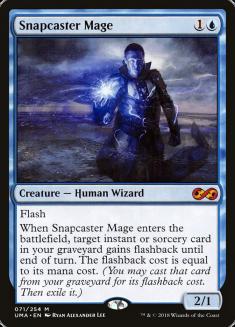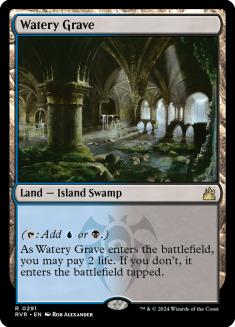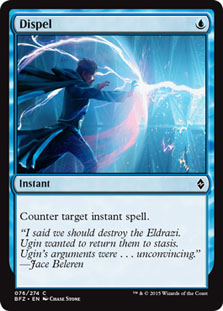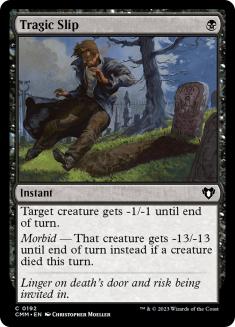Interlude One
In honor of last week’s Team Grand Prix in Providence, RI (FinkelDraft represent), a story from Team Draft’s ancient past when three-on-three was an annual event on the biggest stage, more often than not in the best city as well.
It was September 2001 in NYC, just days before terrorists would topple the World Trade Center towers—and with them the first dominoes in the long line of a still-transforming American outlook. Aaron Forsythe—back when he was a pro player and not yet the boss of all Magic: The Gathering (or even "just" the editor of DailyMTG)—was in town as a member of Car Acrobatic Team at Katz’s Delicatessen with YT and our respective squads. Lord knows what Kowal or Cuneo were willing to eat.
Car Acrobatic Team had finished in second place the previous Pro Tour New York and was at this point less than 72 hours from another Top 4. If you ever have any doubts about Magic’s design team, Forsythe was better than all but a handful of today’s pros and at this point also an elite deck designer, just then responsible for blitzing US Nationals with Ancient Hydras and Skyshroud Poachers. It took a literal Jon Finkel to contain him in those days.
Over a tall pastrami sandwich [that Aaron was incapable of finishing, as I recall, having wolfed down the second half myself "in service" to him] our hero picked his brain RE: team drafting procedure. Our strategy, authored by one Burger King, was to let the opposing team pick first and draft decks reactively against their colors; it worked well for us, and that Pro Tour gave me a 17th that to this day remains my highest PT finish.
Aaron kind of laughed at this customizable strategy.
"We pick first.
I know what cards are good. I take them."
Interlude Two
US Nationals 2010.
Our hero is drafting to the left of another SCG Premium writer (though neither of us write here at the time) and future good buddy.
We are giddy at the state of our draft. We had to persevere through a thin pack 1, but by the 45th card, everything has fallen into place per plan. Over the previous month we went from accidentally trying to learn Rise of the Eldrazi (oops, wrong format) to raising our Magic Limited rating by 200 points formula drafting blue decks. We have mercilessly won every 8-4 in the calendar month.
The future friend / man to our right is seething and grousing to a mutual friend, the Pro Tour Historian. We can hear him from across the room.
"Doesn’t Flores know how to read a draft? I cut off blue!"
BDM laughs uncontrollably realizing that I had cut him out of blue in pack 2. "It is pointless to try to cut Mike out of blue," consoles the Pro Tour Historian.
In the other draft, I took a Cancel first pick and a different Cancel tenth pick. I passed a first pick Inferno Titan to a future Open winner for a Foresee; I Foresaw into a Cancel and Canceled his Inferno Titan on the way to a 2-0 in the first round. I had mulled to five in both games.
"I understand the concept of reading a draft," I say, walking up to the conversation, "but trying to cut me out of blue by taking blue cards is a failed enterprise. In fact, Brian Hacker used to say he liked to draft the same color after someone with worse pick orders than he had. They would protect all his good picks!"
Before we could discuss further, we two were matched.
In a battle of blue decks, I was again triumphant. He only had one Mind Control, and I had two.
End Interludes.
Lies
Per the title, today’s article is about "lies," "damn lies," and a couple of "statistics."
This first section will address a widely held idea in Limited play: cooperative or adaptive drafting.
Cooperative drafting is the idea that by "playing nice" with your neighbors all of you will have better decks; he gets the blue, I get the green, she gets the white—none of us step on the others! Hooray! The opposite possibility being that if you instead fought over cards and colors you would all suffer from thinner options and therefore have weaker decks.
You will notice that both of the above interludes down river happy endings via not drafting cooperatively.
My general thesis is that cooperative drafting, like many generally nonverbal interpersonal interactions in Magic, is generally overrated and simply favors the player with the most powerful frame. To wit, in the second interlude the player to my right assumed he had the more powerful frame given his ability to dictate my available picks in pack 1. This was challenged by my rejection of his blue-gobbling frame in pack 2; I pretty much did whatever I wanted and cut him off, ending up with lots of great blue cards myself.
Why Do [Some] Players Advocate for Cooperative Drafting?
A very defensible answer is that at least in some cases drafting cooperatively will indeed yield a better deck. Stay out of your neighbors’ ways (and vice-versa) and as long as there are picks in your colors you will have a greater flexibility in picks.
I would counter that cooperative drafting—like many other principles in Magic—is simply a tool. You can use it sometimes when appropriate if you think that it will in fact increase your chances of having a strong deck, but that it should not necessarily be your default. Among other reasons, you don’t need maximum flexibility of picks when you can only take one card at a time; it is very possible an inferior drafter in the same colors is actually going to protect your picks for you! Again, I think that cooperative generally just favors the player with greater frame.
Let’s consider the format from the second interlude. Though nonverbal, Player A "dictates" that he is blue and signals that Player B be red by both leaving a Lightning Bolt in the pack and putting Lightning Bolt at the front of the pack, strongly suggesting that Player B should take what is probably the best red common. Hey! Lightning Bolt was a pretty good Limited card.
If player B agrees to this cooperation (ensuring that he will get future "Lightning Bolts" et al.), he is in theory going to pay off Player A with blue cards in pack 2. If you consider just the blue common cards, that might be a bad deal for Player B. Azure Drake and Foresee are both flat-out better than Lightning Bolt. Cloud Elemental—way down in blue’s common pick order—does substantially more damage than Lightning Bolt in the average game (and probably wins more games), and all of Aether Adept, Cancel, and Mana Leak probably all win more games. And you could in those days get Cancel tenth.
Player B—should he agree to this "I will take Lightning Bolt and leave you ALL THE BLUE CARDS"—will in fact be getting a free path to red cards, but he might be agreeing to quite a costly bit in return.
When I passed that Inferno Titan first pick, I tanked for a long time on it, but I decided that the signal of leaving a Foresee in the pack meant more to me than giving up one very good card that I had no guarantee of ever facing. I also knew that U/R was the worst blue deck and that by ensuring the future Open winner to my left would take the Inferno Titan I was further protecting blue in pack 2 (he would be unlikely to take blue cards because he was going to value the Titan so much). And like I said, when we played, it worked out exactly like I thought it would (BTW Finkel later said my pick was wrong and I should have forced U/R myself, Foresee be damned).
This leads me to my more cynical reading of cooperative drafting.
Cooperative drafting has in the Magic community become a TRGR meme used by players with greater frame to manipulate players with less frame but just enough knowledge of available strategies to do whatever the thought-leading overlords would like them to do. I’ve heard of cooperative drafting! I will cooperate! Here are your blue cards!
I had to buy my red player off with an Inferno Titan; it usually only costs a Lightning Bolt to get all the Azure Drakes.
Damn Lies
My least favorite wrong-headed way of thinking about decision-making in Magic is the vilification of being "results focused" or "results oriented."
"Way to be results focused!" said one Pro Tour Champion I know when I made an actually good decision [not actually in a game of Magic].
"Shouldn’t we be results focused in everything we do? That is, shouldn’t our focus be on obtaining the best possible results?"
"Well…yeah. But you know what I mean!"
I think that the stigma against results focus is probably well meaning but poorly translated in Magic. To address this in a useful manner, I think that we need to have a basic conversation on expected value and how expected value applies in a game setting.
To start, think about something you presumably use in almost every IRL tournament match: a fair six-sided die. What kind of numbers should you expect when tossing one of those?
A six-sided die has the following values:
[one]
When you roll a fair six-sided die, you have an equal chance of hitting one, two, three, four, five, or six.
Quick Question: What is the Expected Value of one roll of a six-sided die?
…
The answer to this is a little tricky.
It is 3.5, even though you can’t actually roll a 3.5.
One-sixth of the time you get a 1;
One-sixth of the time you get a 2;
One-sixth of the time you get a 3;
One-sixth of the time you get a 4;
One-sixth of the time you get a 5;
One-sixth of the time you get a 6;
1/6 + 2/6 + 3/6 + 4/6 + 5/6 + 6/6 = 21/6, or 3.5
Understanding what value you get by taking certain actions (like throwing a fair six-sided die) has many implications across many games.
Imagine for a moment the prospect of scoring field goals in a game of basketball:
- Any field goal inside the three-point arc is worth two points.
- Any field goal outside the three-point arc is worth three points.
Generally speaking, the further away you are from the basket, the less likely the ball is to go in; so in theory you would want your two-point field goals to come very close to the basket. Players like Tyson Chandler score at an amazing rate by taking only shots very close to the basket.
Imagine you make about half of your long jump shots (in part because you practice them a lot and in part because you are less closely guarded from far out). If you take those shots inside the arc, your expected value is .5 * 2 = 1; but if you take them just a step back, you get .5 * 3 = 1.5.
Elite NBA offenses like the San Antonio Spurs combine these principles by taking primarily shots close to the basket (two point shots that go in a high percentage of the time) and three pointers (shots that go in an average amount of the time but produce a greater number of points per successful field goal).
Hitting long or acrobatic two-point shots get you on SportsCenter consistently (regardless of how many you missed) but tends to have lower expected value than both close two-point shots and regular old three-point shots; taking them (and making even just one exciting-looking one) might make you an exciting media darling but tends to do little to help your team win games.
So what does this kind of thinking have to do with being results focused in Magic?
Let’s say you have the following board position:
And the following cards in hand:
You and your opponent are both at two life.
Your opponent draws a Pillar of Flame and Bolts your face; they have one other card in hand.
Basically, all you have to do is Negate his Pillar and you can attack him to death. If and when you do, you will make Top 8 of the next Standard Open.
You incorrectly tap your Watery Grave and one of the other lands to cast the hopefully game-winning Negate. Your opponent flips over their other card, and it is a worthless Grafdigger’s Cage. Top 8!
Despite being very happy for you, your know-it-all friend is jumping out of his jumper yelling at you for your mistake.
"Why did you tap the Watery Grave!?!"
I mean "why" questions are rarely useful, but you know what he is getting at.
Perhaps they would have played a blocker [that you could have removed with the Tragic Slip].
Perhaps they were going to follow up with a lethal Searing Spear [that you could have stopped with the Dispel].
Tapping the Watery Grave and the Swamp would prevent you from a Tragic Slip, and tapping the Watery Grave and the Island would prevent you from the Dispel. Only by tapping the Island and Swamp and leaving open the Watery Grave would you be able to maximize your chances to use all your tools.
"Well I won, didn’t I?"
"Way to be results oriented!"
Do you see the problem with this?
You were not results oriented at all. You did not in fact take the action that would make it most likely to achieve your optimal result.
Instead, you used a good result (winning the game) to justify a mistake.
This is what I meant by the vilification of being results oriented being mislaid in Magic. It is in fact very important to be focused on getting great results. Again, it is my opinion that focusing on getting the best possible results is the best thing we can do in almost every context.
If you tap the Watery Grave, you make this same mistake, over and over and over again you are going to lose some games to the Searing Spear and lose different amounts of flexibility to the follow-up creature (which will cost you mana over many games, if not this game in particular, which will in turn translate into losses in other contexts). Your results over time will suffer. Ergo, regardless of the outcome of this individual game, the Watery Grave play was not optimally focused on getting the best result.
If we dial it back to our earlier discussion of Expected Value, we can track our results over time with different Expected Values depending on which lands we tap. Let’s say:
- Island + Swamp = +75%
- Watery Grave + Swamp = +50%
- Watery Grave + Island = +25%
Any universe where we cast the Negate increases our chances of winning (in fact, if we don’t cast the Negate we lose on the spot), but our expected likelihood of victory changes dramatically depending on which ones we pick. We don’t automatically win if we tap the Island and the Swamp (say they have another Pillar of Flame or they intend to block with an Invisible Stalker), but maintaining the ability to play either of the other two one-mana spells will allow us to win many more games in aggregate.
But hey, sometimes you win the game on a long two-pointer.
And finally:
Statistics
Tournament Magic players in 2013 have by and large lost the core message of the best Magic article of 2006, Information Cascades in Magic by Patrick Chapin, which is that you only get edge by disagreeing with the crowd.
This concept is of course closely related to both not conceding your decisions and destiny to players with greater frame (especially "lots" of them) or buying into poorly articulated sound bites. In that spirit, I would like to end this article with a bit of disagreement and deviation that might be useful to you.
Let’s look at the last two Standard Open winners.
One deck played the following creatures:
Blood Artist (B)
Boros Reckoner (R/W)
Cartel Aristocrat (B/W)
Doomed Traveler (W)
Falkenrath Aristocrat (B/R)
Obzedat, Ghost Council (B/W)
Vampire tokens (B)
The other played:
Blood Artist (B)
Cartel Aristocrat (B/W)
Doomed Traveler (W)
Skirsdag High Priest (B)
Voice of Resurgence (G/W)
Young Wolf (G)
Varolz, the Scar-Striped (B/G)
Vampire tokens (B)
Both decks beat Naya opponents in their finals that fielded creatures that were either small or somehow white or both.
Differently, how afraid are you of a topdecked Young Wolf?
As this article is already at the 2,700-word mark, I will just cut to the chase:
Blood Baron of Vizkopa is the single most underplayed creature in Standard. It on curve is interchangeable with either Thragtusk or Obzedat, Ghost Council but will many times do quite a bit more work while in general accomplishing many of the same things.
I have been toying around with Blood Baron of Vizkopa in a variety of decks and have at this point done everything from completely invalidating an Aristocrats deck to racing two huge Elemental tokens, both wearing Unflinching Courage.
Blood Baron of Vizkopa puts Thragtusk’s life gain on suspend 1—but can pay off more life gain if you give it a second. It also dodges basically every spot removal spell in the format save Mizzium Mortars. You can’t even hit it with the ubiquitous Azorius Charm! You can’t steal it with Olivia Voldaren! You know how Boros Reckoner and Rakdos Keyrune beat the hell out of Thragtusk? Blood Baron of Vizkopa beats the hell out of those guys.
I am not 100% sure of the proper Blood Baron home, though my intuition is that there are ramp decks that can accommodate about eight five-drops; perhaps you can slot it in Junk Reanimator (as Jonathan Medina suggested) over Thragtusk as a preemptive reaction to The Aristocrats. I do know that as far as deviations go, this one is on the cusp of a super sweet sweet spot.
Does Blood Baron of Vizkopa get no play? No.
Just not enough.
LOVE
MIKE








